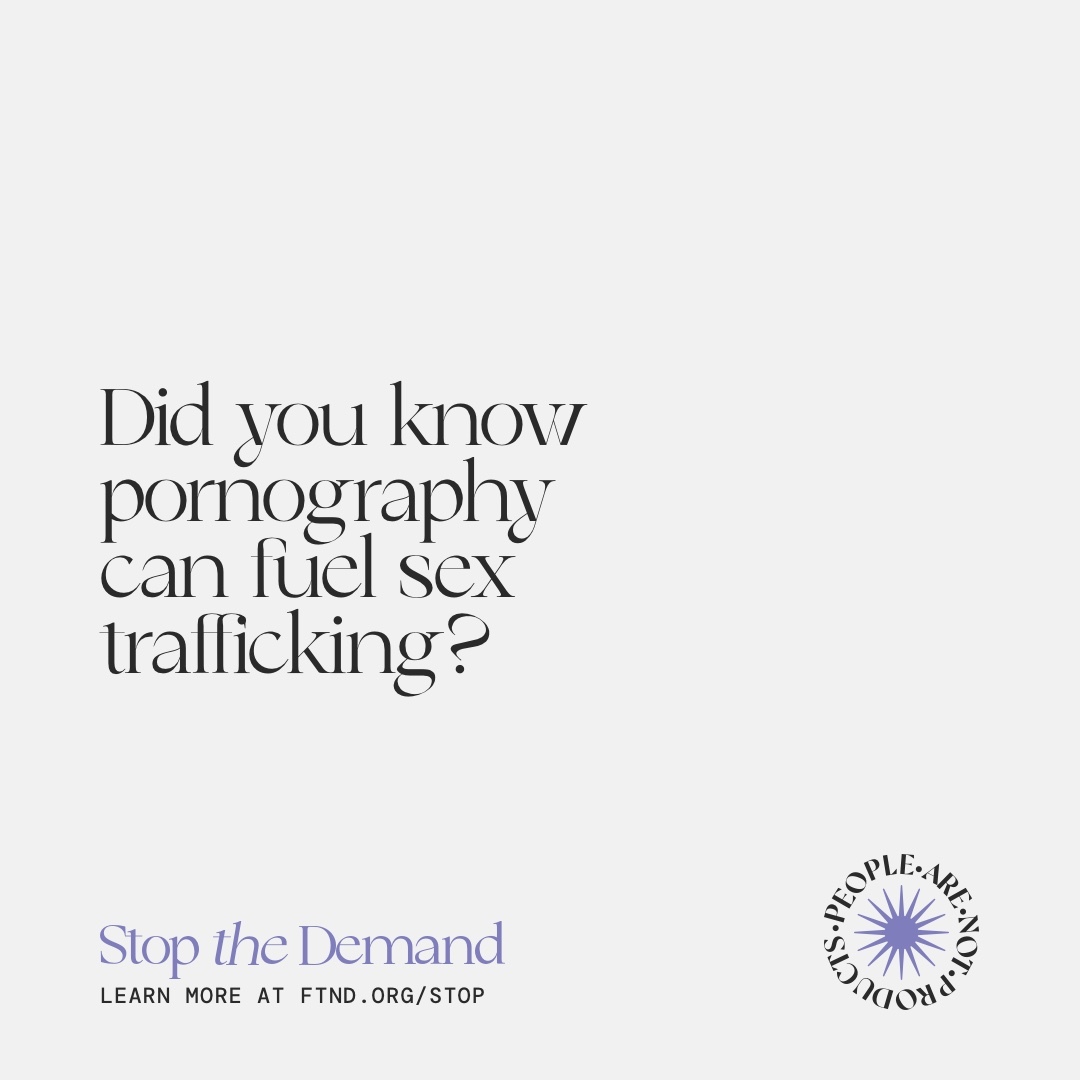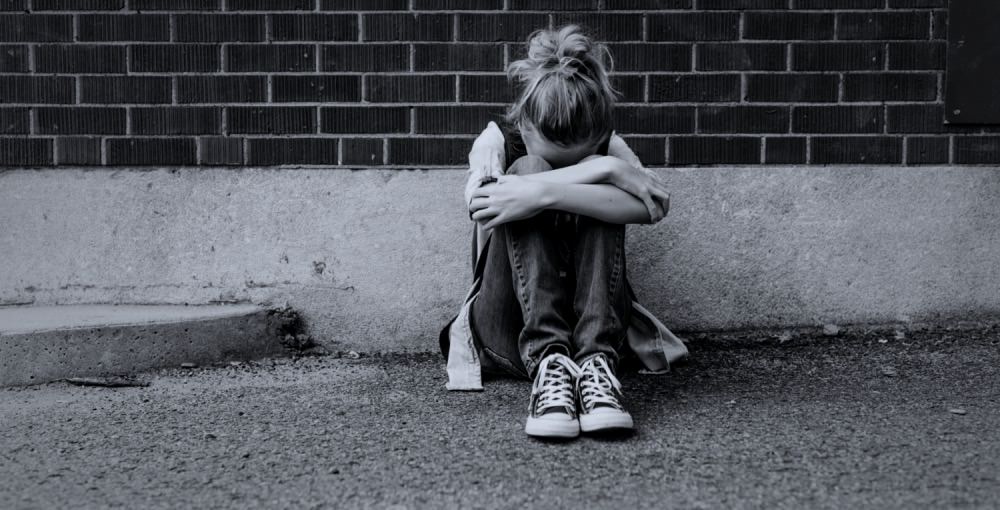Did you know child sex trafficking is a growing global underground industry?
Thorn—co-founded by Demi Moore—is one of the key players in the fight against child sex trafficking. The organization focuses on tech-led approaches to end online child sexual abuse through products like victim identification tools that are provided for free to law enforcement. Thorn’s Spotlight tool has helped to identify over 16,000 child victims of sexual exploitation to date—including nearly 5,000 victims in 2019 alone.
Another key focus of Thorn’s is to empower the public to recognize and report trafficking through education and awareness. And when it comes to decoding the language of such a complex issue as child sexual exploitation, understanding a few key terms can help.
Related: 5 Myths You’ve Probably Heard About Child Sex Trafficking
So as you make a conscious effort to engage in conversations, bring this issue to light no matter how uncomfortable, and advocate for child victims, here are a few of the most commonly used acronyms that are essential to know.
CSE: Child Sexual Exploitation
This broad term encompasses all forms of child sexual exploitation and is used when talking about the issue as a whole. It includes all individual pieces and terms which we’ll discuss next.
CSA: Child Sexual Abuse
Child Sexual Abuse is also a broad term and may be used interchangeably with CSE. RAINN defines CSA this way: “Child sexual abuse is a form of child abuse that includes sexual activity with a minor. A child cannot consent to any form of sexual activity, period. When a perpetrator engages with a child this way, they are committing a crime that can have lasting effects on the victim for years. Child sexual abuse does not need to include physical contact between a perpetrator and a child.”
CSA is beyond only hands-on abuse and can also include sharing obscene materials or messages with a child.
CSAM: Child Sexual Abuse Material
Child Sexual Abuse Material—often referred to as child pornography—refers to any content that depicts sexually explicit activities involving a child. CSAM could include photos, videos, live streaming, audio files, or computer-generated images. Compared to the term “child pornography,” CSAM better describes the impact that this crime has on its victims.
CSAI: Child Sexual Abuse Imagery
Child Sexual Abuse Imagery may be used interchangeably with CSAM. However, CSAI refers specifically to images.
CSEI: Child Sexual Exploitation Imagery
Child Sexual Exploitation Imagery may be used in place of child pornography, CSAM, or CSAI. However, CSEI is widely encompassing and more appropriately describes the nature of this content in all its variety of files and formats as well as its impact on victims.
CSEC: Commercial Sexual Exploitation of Children
Because “trafficking” can imply movement, CSEC may be the preferred interchangeable term in some contexts. CSEC also includes the exchange of CSAM when payment is involved.
DMST: Domestic Minor Sex Trafficking
While sometimes used interchangeably with CST or CSEC, DMST distinguishes domestic trafficking (like within the U.S.) from the global issue as a whole.
NCMEC: National Center for Missing & Exploited Children
Pronounced “nick-mick”, the NCMEC is the United States national hub for all reports of child sexual exploitation via their CyberTipline reporting system. While the work of NCMEC isn’t limited to sexual exploitation, they’re a key player in preventing these crimes as well as identifying and recovering victims.
CST: Child Sex Trafficking
The National Center for Missing and Exploited Children (NCMEC) defines Child Sex Trafficking as: “the recruitment, harboring, transportation, provision, obtaining, or advertising of a minor child for the purpose of a commercial sex act, which involves the exchange of anything of value—such as money, drugs, or a place to stay—for sexual activity.” In other words, CST is the exchange of something of value for sexual activity with a child.
It’s important to understand that while the term “trafficking” implies transportation, a child doesn’t have to be moved for trafficking to occur.
Related: INTERPOL Report Reveals The Disturbing Truth About COVID-19’S Impact On Child Exploitation
While it can be extremely difficult to think about vulnerable children being victims of these crimes, that pain and urgency to act is essential for anyone hoping to make a difference.
Whether you’re new to this issue or you’ve been fighting it for years, it’s important to know that child sex trafficking is a complicated issue, and not everything you read online is factual.
Considering evidence-based research is essential to fighting trafficking and defending child victims. And along with that comes learning what’s true and what’s not. After all, when we know what we’re actually up against, we can find the right solutions.
Thorn provides another critical tool by identifying these 5 key facts about child sex trafficking.
1. Understand the definition of child sex trafficking
Avoid confusing CST with other forms of child exploitation. Refer to the NCMEC’s definition above, and pay particular attention to differentiating it from CSAM. CST involves a financial incentive, while CSAM is largely fueled by predators and the content itself is what they’re after rather than something monetary.
2. Traffickers often already know their victims and build trust over time
In the movies, CST often involves an unmarked white van and men in masks who abduct their victims. But on the front lines, CST typically looks much different.
CST is often, though not in all cases, a long process where the trafficker gains trust, grooms, and coerces the victim over time. Traffickers may exploit the existing trust of the victim or their family members. The process can go on for months or even years before the victim is trafficked.
Related: Understanding How Child Sexual Abuse Images Are Used To Groom Abuse Victims
Polaris estimates that over 60% of coercion into sex trafficking comes from intimate partners or family members, rather than strangers. Thorn’s survivor survey shows that 88% of victims say their trafficker promised to take care of them, 83% responded that the trafficker bought them things, and 73% noted that the trafficker told them they loved them.
While movies or social media feeds may depict something different, most CST occurs through a long grooming process by someone the victim already knows.
3. Child sex trafficking can happen anywhere and everywhere
The fact is, children are being trafficked in cities, rural areas, and everywhere in between in all 50 states in the US—even though many of their stories aren’t shared on the news or social media.
CST can happen to anyone. However, there are distinct vulnerabilities that make certain groups more likely than others to become victims. For examply, minority groups are greatly overrepresented in CST cases, and studies show that 50-90% of child sex trafficking victims have been involved in the child welfare system, such as foster care.
4. Education is essential
CST is an emotional topic that can be difficult to address. There’s an overall deficit on the amount of data related to this issue, but we’re learning more every day. It’s crucial to arm yourself with evidence-based data and to listen to the voices of survivors as you navigate ways to make a difference.
5. You can make an impact
It can be a helpless feeling when a screen so often separates child victims from those who want to help. However, there are many things you can do to help defend them.
Start by doing your research and learning all that you can. Follow and support organizations like NCMEC and Polaris, and as you stay up to date on current data, be an advocate for truth. Don’t be afraid to debunk conspiracy theories or viral misinformation you see online, and offer to replace it with something factual. Consider the sources of information you come across, and make sure it’s from a reputable source before sharing it yourself.
And if you do see evidence of child sex trafficking or child sexual abuse material, follow these steps to report it.
Fighting for a world where every child is free
By understanding the issue as a whole—including pornography’s role in the sexualization and exploitation of children—and being willing to have tough conversations, we can bring this issue to light and move one step closer to a world free from this abuse.
By holding key players like the porn industry accountable and being willing to learn and share the facts, you can help make sure no victim is forgotten—and that many more children may not have to suffer.





